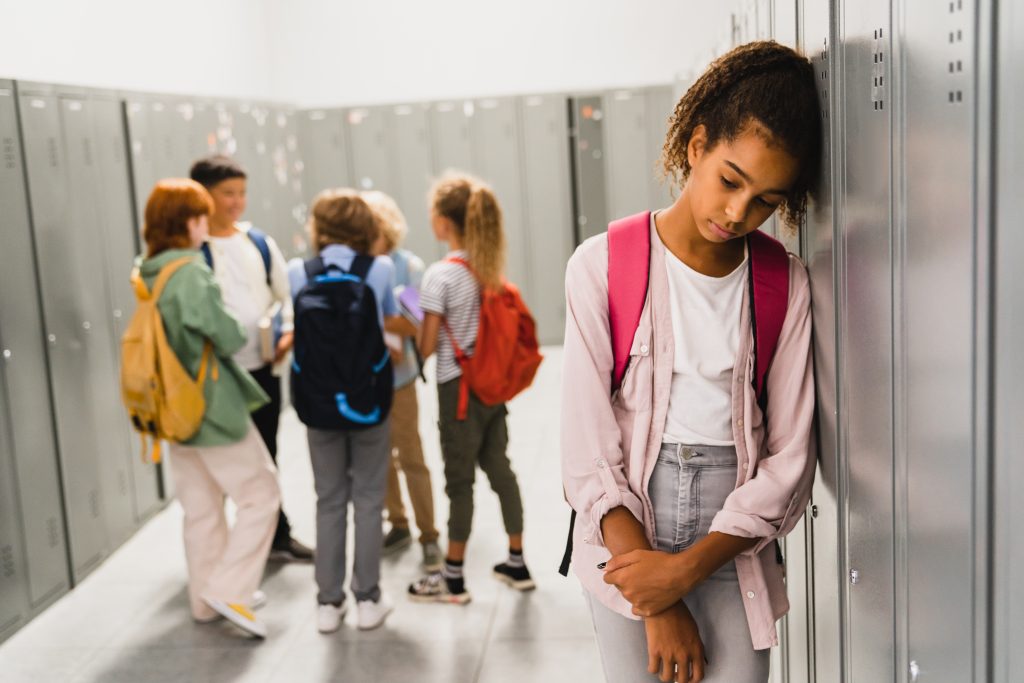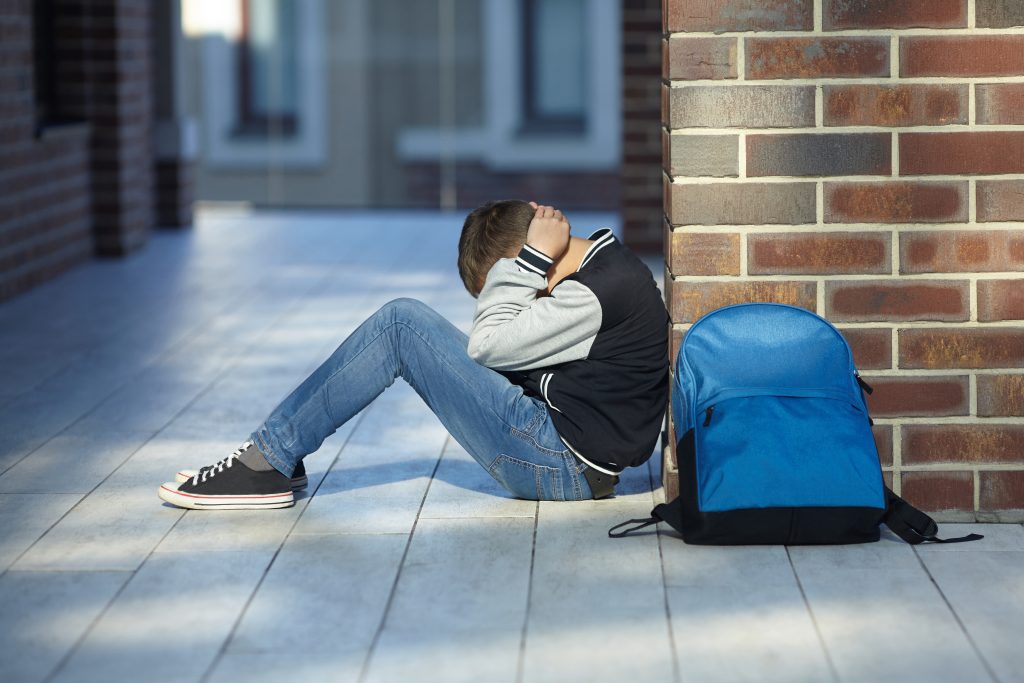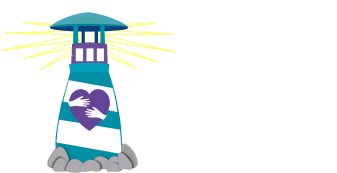School Intervention
Schools can convey that they value and care for their students and staff by implementing best practices’ suicide prevention, intervention, and postvention plans. The best intervention programs are successful because good training precedes them, allowing school communities to identify students at risk quickly and safely and to follow-up regularly and monitor these students. Thankfully, good prevention and intervention lessen the need for postvention programs.
School resources
Idaho Guidelines for suicide prevention in schools
IDAPA 08.02.03.160 states that “the State Board of Education rule requires that each school district adopt, and review annually, a comprehensive district-wide policy and procedure encompassing…7. Suicide Prevention…” among others. The following information is derived from best practices in school suicide prevention including: Madison Metropolitan School District guidelines; Maine Youth Suicide Prevention; Youth Suicide Prevention; Intervention & Postvention Guidelines; The Maine Youth Suicide Prevention Program, 2006; the California State Department of Education guidelines; the Florida Mental Health Institute guidelines; the Substance Abuse and Mental Health Services Administration; Why People Die by Suicide, Thomas Joiner, PhD, 2005; and the Idaho Schools and Suicide Work Group, a sub-committee of the Idaho Council on Suicide Prevention.

Intervention program goals
- To identify and respond to students at risk for suicide in a prescribed manner while keeping both the student and classmates safe
- To set up pre-arranged building contact(s) for the preliminary assessment of the student
- To refer students at risk to recognized mental health programs which may include Emergency Personnel (Ambulance And/Or Police) and designate people who make calls to these agencies and to parent/guardians
- To have a pre-determined documentation plan, which must include dates and times of parent/guardian contacts and their responses
- To help students integrate safely back into the school setting when appropriate
- To monitor the student after integration
- To provide school or staff support if needed
For More Information see Suicide Prevention in Schools: Legal Considerations and Liability
Critical Pre-Planning
- The entire school community must be trained in prevention and intervention and then act accordingly. The school community includes administration, custodians, bus drivers, teachers, students, aides, lunch room workers, regular volunteers, etc., so that they are ready to respond at the initial identification of students at risk.
- Pre-screening of agencies that can offer mental health help to the student and family, including those who take sliding-scale fees, and who are willing to work with the school to re-integrate the student when appropriate, is important so that the intervention is smooth.
- Emergency personnel and police, including school resource officers and security, should be involved in planning so that all parties understand procedures, and their roles in managing the situation.
- Protocols should be available for times when parents are unavailable or when they refuse to take their child (deemed critical) to receive mental health services.
- Confidentiality rights must be explained and understood by anyone involved.
- A crisis that affects a classroom or a group of students may require postvention work. (Confidentiality issues apply here. Know your district’s confidentiality policies.)
- Cultural issues and language barriers must be addressed, and protocols set up to accommodate these students and their families’ needs in a crisis.
After a student is identified and is in the custody of the identified
mental health screener, then the mental health screener should
follow specific guidelines.
Screener Protocol
- Never leave the student alone until he/she is in custody of the parent or guardian, mental health authority, or emergency personnel.
- Use screening devices carefully to assess the extent of the threat to self or others. See Student Interview Questions
- Follow through with parent or guardian regardless of the assessment outcome. If a student is deemed likely to hurt self or others, also contact the agency where the parent and student are to go and ask that the agency call you if they fail to show up in a timely fashion. See Sample Confirmation of Parental Contact
- Debrief those involved—student, teacher, school personnel who brought the student to the mental health screener (Confidentiality issues apply here. Know your district’s confidentiality policies)
- Follow up with the parent and the mental health agency and ask parents to sign release of confidentiality with that agency. Use your district’s confidentiality release form.
- Decide with the parent and the mental health agency how and when the student is to return. See Sample Student Re-Entry Plan
- Document all of the preceding steps. See Sample Confirmation of Parental Contact and Student Record of Actions Taken and Sample Incident Report
NO STUDENT with any risk level SHOULD BE SENT HOME ALONE. The student should be accompanied by an adult who is informed of the situation and who will provide a list of resources. The adult cannot leave the child until he/she is in custody of a parent or guardian.

Other intervention Considerations
Assessment tool
Each school must find the best risk assessment tool to fit its needs and train its student services staff. The assessment should involve:
- Determining whether the student has a suicide plan and what it is.
- Asking whether the student has lethal means (on person or accessible elsewhere).
- Consulting with other student services personnel, determining if other evaluations are being done, and finding out any other related information from teachers or peers.
- Collecting any current information about the student, such as, attendance, behavioral records, and previous evaluations from appropriate staff.
- Informing administration of results of risk assessment and determining next steps.
No Suicide or safety contracts
The use of no-suicide contracts is not recommended. Such contracts normally consist of a written agreement between a person deemed at risk and their counselor/therapist in which the person at risk agrees not to attempt suicide. The contracts are not recommended for several reasons. No-suicide contracts tend to be worded to instruct the person at risk what NOT to do rather than what TO do. Second, there is no research demonstrating that these contracts work. There are, however, studies showing that they do not work well and even one study suggesting they could be associated with more self-harm. (Joiner, 2005) Lastly, no-suicide contracts are not binding legal documents and will provide no immunity from liability. Recommended instead is the use of care cards. A care card comprises a concise, user-friendly crisis plan with a few simple statements. The development of the card itself can help to dilute the intense distress often experienced during intervention. Care card statements can be written on an index card, piece of paper, typed and printed on card stock, or anything else that can be easily kept on one’s person. Cards should focus on increasing feelings of belongingness and decreasing feelings of burdensomeness/ineffectiveness. (Joiner, 2005) See Sample Care Card.
Report suspected abuse
When anyone has reasonable cause to suspect that a student has been or is likely to be abused or neglected, s/he must make a report of suspected abuse or neglect to the proper authorities. In Idaho, school staff, as well as all adults, are mandated reporters. In Idaho, call 211 to report child abuse or your local police. If a school staff member determines that a student under age 18 appears to be at risk of attempting suicide, and the parent/guardian refuses to obtain services for him/her, a report should be made to the Department of Health and Welfare (DHW) for emotional abuse (failure to seek necessary mental health treatment), which may place the child at risk of serious harm. DHW will conduct an assessment to determine if abuse or neglect exists and will engage the family voluntarily in meeting the treatment needs of the child.
Separate the suicidal student from lethal means if the means are on or near the student. For example, if a weapon is near the student, such as in a backpack., leave the backpack and take the student to another room. Be sure authorities are alerted. See below. If student has pills on him/her, ask if you can hold the pills for him/her while you are talking. Call the police when the student is in possession of a weapon, such as a gun, knife, or other dangerous item. Secure the area and prevent other students from entering the room or area or by removing students to the hall or other classrooms. Since lethal means must be removed without putting anyone in danger and remain least restrictive, immediately notify your school resource officers or local law enforcement agency. Law enforcement officers have special training to de-escalate a situation that can very quickly become dangerous. If a student requires evacuation by ambulance, the police need to be notified.
Guidelines for a student suicide attempt
on school premises
- In classrooms or other small groups where the student was present during the crisis, offer a brief statement assuring others that the student who made the suicide attempt is receiving help (ask parents how they would like situation to be addressed). Keep the details of the attempt confidential, while addressing the facts of the situation in a respectful, non-glorifying way. Keep in mind that each situation is different.
- Describe and promote resources for where students can get help.
- Monitor close friends and other students known to be vulnerable and offer support as needed.
- Conduct a mandatory informational debriefing for staff, administrators, and crisis response team members who directly dealt with the student in crisis and take notes for staff attending to students during the meeting or who are absent that day. Help other school staff by providing an opportunity to address feelings and concerns, and conduct any necessary planning.
- Document actions taken as required by school protocol.

Off School Premises
A severe, life-threatening suicide attempt off school premises can also have a significant impact on the student body. To prevent a crisis from escalating among students, it is important that school personnel follow these steps, or implement your school district’s crisis plan.
- Notify the school administrator or designee who will verify the crisis with police/parents and then immediately communicate with designated individuals, as needed, such as crisis or student assistance team members, the school nurse, social worker, counselor or psychologist, emergency medical professionals, community crisis service providers, law enforcement and the superintendent of schools.
- The superintendent or designee alerts principals at schools attended by siblings, who in turn will notify counselors, nurses, and others in a position to help siblings and other students who might be affected.
- Mobilize the school-based crisis team, with support from community crisis service providers, to help staff address the reactions of other students. When other students know about a suicide attempt, steps must be taken to avoid copycat behavior among vulnerable at-risk students. (*Note: at-risk students may be friends and relatives of the student or other students who may not know the individual, but who themselves are at risk for other reasons.)
- Establish communication with the parent/guardian to determine intervention steps and how the school might be helpful and supportive to the student and family. Also address how the family would like the situation announced at school.
- With a severe suicide attempt, convene a staff meeting and address the issue of the crisis with the facts and how to proceed. Inform the staff if/how to announce it to the students, when appropriate. See Sample Announcements from Response to Suicide and Sudden Death and modify as necessary.
- Establish a plan for periodic contact with the student while away from school.
- Make arrangements, if necessary, for class work assignments to be completed at home. If the student is unable to attend school for an extended period of time, determine how to help the student complete his/her requirements, e.g., homebound instruction. See Sample Student Re-Entry Plan.
More on School Suicide, Prevention, and postvention
Help bring resources, hope, and support to those
affected by suicide
donating and getting involved
If you are interested in volunteering with us on a regular basis, please fill out the form. You may also join us at our monthly community meetings which are held the first Thursday of each month. See our events page for more information.
Get Involved
Donate
Get Involved
Donate
Support Community Suicide Prevention Through A Donation


